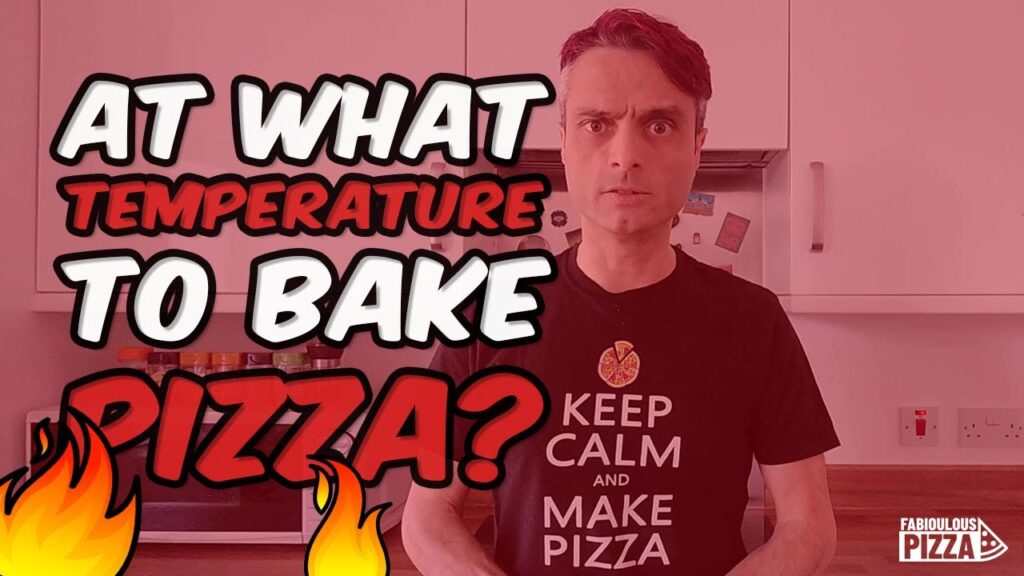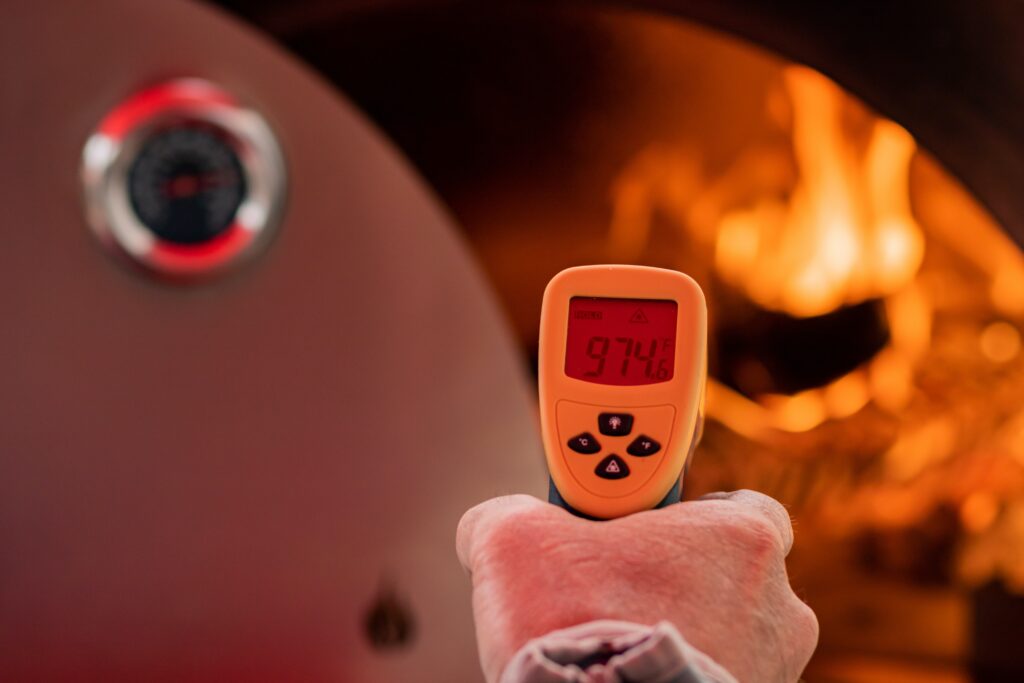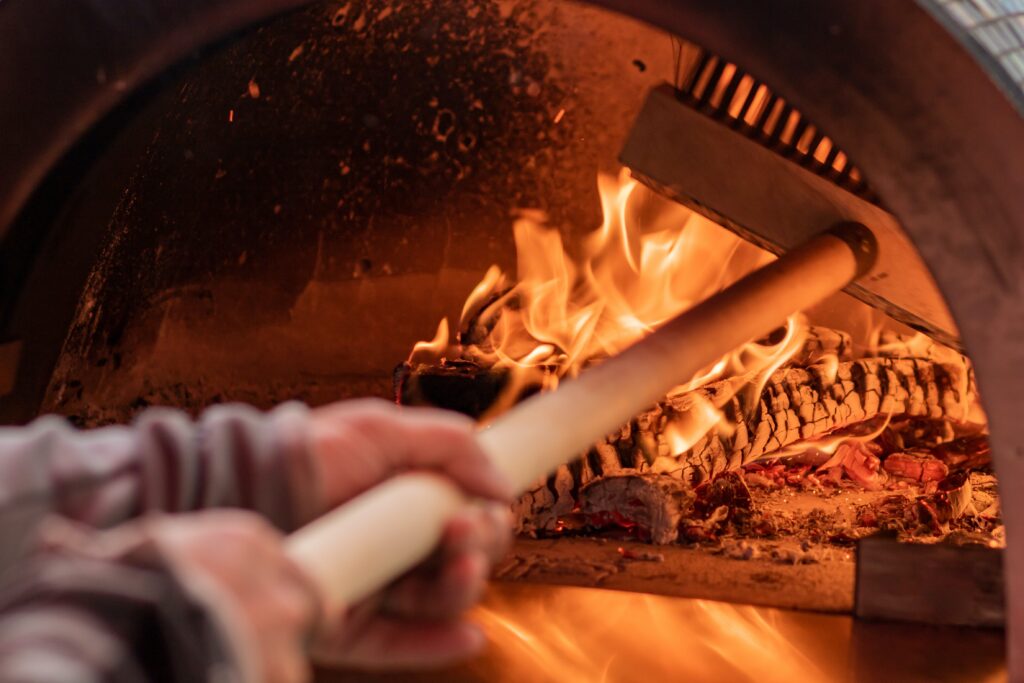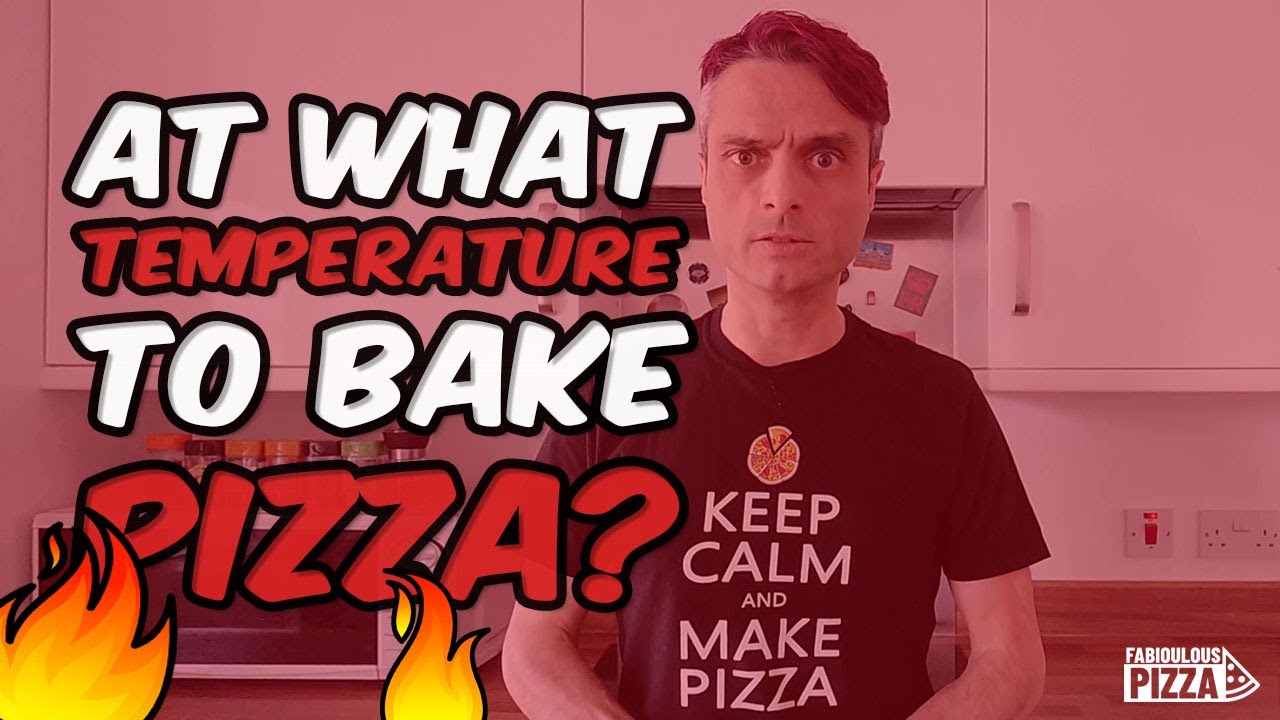In the video “From Sizzle to Savor: A Guide to Perfect Pizza Oven Temperature,” Fabioulous Pizza tackles the age-old question of what temperature is best for baking pizza in a home oven. While he acknowledges that every oven is different and there is no one-size-fits-all answer, Fabioulous Pizza provides helpful guidelines and tips to help you achieve a deliciously cooked pizza. He emphasizes the importance of preheating your oven as high as it can go and adjusting the baking time based on the temperature you can afford. With some trial and error, you will be able to master the art of baking pizza at just the right temperature, ensuring a crispy crust and perfectly melted cheese. So, if you’re tired of undercooked or overcooked pizza, give this video a watch and take your pizza-making skills to the next level!
From Sizzle to Savor: A Guide to Perfect Pizza Oven Temperature

Use this to make sure that you get the perfect temperature for your pizza oven
Introduction to Pizza Oven Temperature
Welcome to the world of pizza perfection! Whether you’re a seasoned pizza enthusiast or just starting out on your culinary journey, understanding and controlling the temperature of your pizza oven is crucial to achieving that mouthwatering, sizzling slice of heaven. In this comprehensive guide, we will take you through the ins and outs of pizza oven temperature, from the science behind it to the methods for determining and maintaining the ideal temperature. So get ready to delve into the wonderful world of pizza oven temperature and elevate your pizza-making game to new heights.
Understanding the Ideal Pizza Oven Temperature
The temperature of your pizza oven plays a vital role in achieving the perfect pizza. It’s not just about heating the oven; it’s about finding that sweet spot where your pizza crust turns golden brown, the cheese melts just right, and the toppings cook to perfection. The ideal temperature can vary depending on the type of pizza you’re making, and we will explore this further in the following sections. But in general, a temperature range of 450°F to 500°F (232°C to 260°C) is often considered optimal for most pizzas.
Use this to make sure that you get the perfect temperature for your pizza oven
Factors Affecting Pizza Oven Temperature
Several factors can influence the temperature of your pizza oven, and understanding these factors will help you achieve consistent and reliable results. Let’s take a closer look at some of the key factors:
Type and Size of Pizza Oven
The type and size of your pizza oven can greatly impact its temperature. Different ovens, such as wood-fired, gas, or electric ovens, may have varying heat distribution and heating mechanisms. Additionally, the size of the oven can affect how quickly it reaches and maintains the desired temperature. It’s important to familiarize yourself with the specific characteristics of your oven to effectively control its temperature.
Fuel Source and Oven Design
The type of fuel you use in your pizza oven, whether it’s wood, gas, or electricity, can influence the temperature and cooking process. Each fuel source has its own unique characteristics, such as the intensity and evenness of heat, which can affect the final outcome of your pizza. Similarly, the design of the oven, including insulation and airflow, can impact the temperature stability and overall cooking performance.
Thermal Mass and Heat Distribution
The thermal mass of your pizza oven, referring to its ability to retain and evenly distribute heat, can significantly affect temperature control. Ovens with higher thermal mass tend to hold heat longer and provide more consistent cooking conditions. On the other hand, ovens with lower thermal mass may require frequent adjustments to maintain the desired temperature. Understanding the thermal properties of your oven will help you manage and optimize its temperature for perfect pizzas.
Methods for Determining Pizza Oven Temperature
Now that you have a good understanding of the factors influencing pizza oven temperature, let’s explore some methods for determining and monitoring the temperature of your oven.
Using an Oven Thermometer
One of the most accurate ways to measure the temperature of your pizza oven is by using an oven thermometer. These devices are specifically designed to withstand high temperatures and provide accurate readings. Simply place the thermometer inside your preheated oven and wait for it to stabilize. This method gives you a precise temperature reading, enabling you to fine-tune and maintain the desired temperature.
Testing with a Pizza Stone
Another popular method for determining pizza oven temperature is by using a pizza stone. Place the stone in the oven and let it preheat along with the oven. Once the stone is adequately heated, sprinkle a small amount of flour or cornmeal on its surface. If the flour turns golden brown within 60 to 90 seconds, your oven is likely around 450°F to 500°F (232°C to 260°C) – the ideal temperature range for most pizzas.
Trial and Error Method
If you don’t have an oven thermometer or pizza stone, don’t fret! You can still determine the temperature of your oven through a trial and error method. Start by preheating your oven at a moderate temperature (around 400°F to 425°F or 204°C to 218°C) and bake a small test pizza. Keep a close eye on the crust, cheese, and toppings. If the crust is pale and the cheese doesn’t melt properly, your oven may be too cool. On the other hand, if the crust burns and the cheese melts too quickly, your oven may be too hot. Use this feedback to adjust the temperature accordingly and continue experimenting until you find the sweet spot.

Preheating the Pizza Oven
Preheating your pizza oven is a crucial step in achieving the perfect pizza. Proper preheating ensures that the oven reaches the desired temperature throughout, allowing your pizza to cook evenly and efficiently. Here are some important considerations when it comes to preheating:
Importance of Proper Preheating
Preheating your oven is essential for several reasons. Firstly, it allows the oven to reach the desired temperature, ensuring consistent cooking results. Secondly, preheating helps to eliminate any residual moisture or odors from previous use, preventing them from affecting the flavor of your pizza. Lastly, it ensures that the cooking surface, whether it’s a stone, steel, or the oven floor itself, is adequately heated, promoting optimal crust development.
Preheating Time for Different Oven Types
The preheating time for your pizza oven can vary depending on its type and size. Wood-fired ovens typically require the longest preheating time, ranging from 45 minutes to 1 hour. Gas ovens, on the other hand, can reach the desired temperature in 15 to 30 minutes. Electric ovens usually have a shorter preheating time, ranging from 10 to 20 minutes. It’s important to consult your oven’s manual or manufacturer’s recommendations for specific preheating times.
Tips for Efficient Preheating
To ensure efficient preheating of your pizza oven, here are a few tips:
- Remove any racks, pans, or obstructing objects from the oven to allow for proper airflow.
- If using a wood-fired oven, start the fire early to allow the temperature to gradually rise. This helps to evenly distribute the heat and prevents temperature fluctuations.
- If using a gas or electric oven, set the temperature to the desired level and allow enough time for the oven to reach that temperature before placing your pizza inside.
- Position the pizza stone or baking steel in the oven during preheating to ensure it gets adequately heated. This assists in achieving optimal crust crispness.
Choosing the Right Temperature for Different Pizza Styles
Different pizza styles require different oven temperatures to achieve their signature characteristics. Let’s explore the ideal temperature range for some popular pizza styles:
Neapolitan Pizza
Neapolitan pizza, known for its authentic Italian flavors and soft, airy crust, is traditionally baked in a wood-fired oven at extremely high temperatures. To replicate this style, aim for a temperature between 800°F and 900°F (427°C to 482°C). The high heat creates a beautifully charred crust while ensuring the toppings cook quickly and the cheese melts to perfection.
New York Style Pizza
New York style pizza, with its characteristic thin, yet foldable slices, is typically baked at a lower temperature than Neapolitan pizza. Aim for a temperature range of around 500°F to 550°F (260°C to 288°C). This lower temperature allows for a longer cooking time, resulting in a crisp yet tender crust.
Deep Dish Pizza
Deep dish pizza, originating from Chicago, requires a lower and slower baking method to achieve its signature thick crust. Preheat your oven to around 375°F to 425°F (190°C to 218°C) for deep dish pizzas. The lower temperature ensures that the crust bakes thoroughly, while the toppings remain moist and flavorful.
Thin-Crust Pizza
Thin-crust pizzas, popular for their crispy texture and quick cooking time, benefit from higher oven temperatures. Aim for a temperature range of 475°F to 525°F (246°C to 274°C) to achieve a delightfully thin and crispy crust.
Gluten-Free Pizza
Gluten-free pizzas, which require special attention to prevent a soggy or gummy crust, are often baked at slightly lower temperatures. Preheat your oven to around 425°F to 450°F (218°C to 232°C) for gluten-free pizzas. This slightly lower temperature allows the crust to crisp up without overcooking or becoming too dry.

Baking Time for Different Pizza Sizes
The size of your pizza can also influence the baking time, as larger pizzas generally require longer cooking durations. Here are some guidelines for baking time based on different pizza sizes:
Personal Size Pizza
For a personal-sized pizza, with a diameter of around 6 to 8 inches (15 to 20 cm), the baking time typically ranges from 8 to 12 minutes. Keep a close eye on the crust and toppings, and adjust the baking time accordingly, as oven performance and temperature can vary.
Medium Size Pizza
Medium-sized pizzas, with a diameter of around 10 to 12 inches (25 to 30 cm), generally require a baking time of 12 to 16 minutes. Again, monitor the pizza closely and make adjustments if needed to achieve the desired doneness of the crust and melted cheese.
Large Size Pizza
For larger pizzas, with a diameter of 14 to 16 inches (35 to 40 cm), the baking time can range from 16 to 20 minutes. Take into account the thickness of the crust and the number of toppings when determining the ideal baking time. Remember to rotate the pizza midway through baking to ensure even cooking.
Party Size Pizza
Party size pizzas, often measuring 18 inches (45 cm) or more in diameter, may require longer baking times. Depending on the thickness and number of toppings, the baking time can range from 20 to 25 minutes. Keep a close eye on the crust, as it should be golden brown and the toppings thoroughly cooked.
Tips for Achieving the Perfect Pizza Oven Temperature
Now that you’re armed with knowledge about pizza oven temperature, here are some additional tips to help you achieve pizza perfection:
Proper Oven Maintenance
Regularly clean and maintain your oven to ensure optimal performance and temperature control. Remove any ash, debris, or food residue that may affect the heat distribution. Check for any damaged or worn-out parts and replace them promptly.
Using Pizza Stones or Baking Steel
Investing in a quality pizza stone or baking steel can greatly improve the temperature stability and cooking performance of your pizza oven. These heat-retaining surfaces help to evenly distribute the heat, resulting in a crispy and evenly baked crust. Preheat the stone or steel along with the oven for best results.
Monitoring the Pizza Oven Temperature
Keep an eye on the temperature of your pizza oven throughout the cooking process. Use an oven thermometer to ensure the temperature remains within the desired range. Make adjustments as needed to maintain consistent heat for perfect pizzas every time.
Adjusting Temperature for Desired Results
Don’t be afraid to experiment with slight variations in temperature to achieve different results. If you prefer a slightly softer crust, lower the temperature by 25°F (14°C) and increase the baking time. If you want a crisper crust, increase the temperature by 25°F (14°C) and shorten the baking time. Remember to keep track of the adjustments so you can reproduce your favorite outcomes.

Common Mistakes to Avoid
To wrap up our guide, let’s touch on some common mistakes to avoid when it comes to pizza oven temperature:
- Overcrowding the oven: Placing too many pizzas in the oven at once can lower the temperature and result in uneven cooking. Give each pizza enough space for proper heat circulation.
- Opening the oven door frequently: Every time you open the oven door, heat escapes, causing temperature fluctuations. Only open the oven when necessary and keep the door closed as much as possible.
- Neglecting preheating: Skipping or rushing the preheating step can result in undercooked or unevenly cooked pizzas. Take the time to properly preheat your oven for optimal results.
- Neglecting maintenance: Poorly maintained ovens can have uneven heat distribution, affecting the overall cooking process. Regularly clean and maintain your oven to ensure consistent performance.
Conclusion
Congratulations! You’ve now gained a comprehensive understanding of pizza oven temperature and how it impacts your culinary masterpiece. By understanding the ideal temperature range, factors influencing temperature, and methods for determining temperature, you’re well-equipped to create perfectly baked pizzas every time. Remember to experiment with different oven temperatures, preheating times, and baking durations to find your preferred style and flavor. So don your pizza chef hat, fire up that oven, and savor the delicious fruits of your labor. Happy pizza making!
Use this to make sure that you get the perfect temperature for your pizza oven
